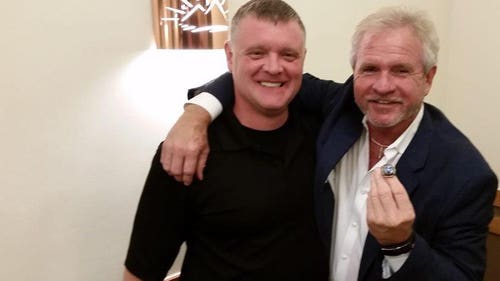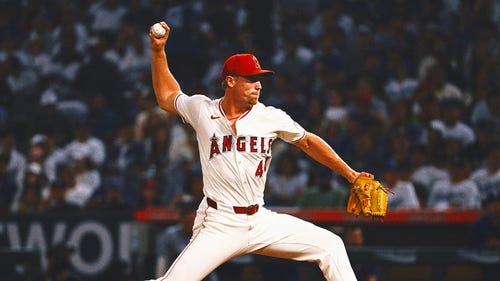
Mound Games: Pitching conditions always a concern
The mound at Comerica Park sits under a protective tarp during batting practice - and why not?
Once the game starts, the abuse begins.
For about three hours, this unassuming lump will be stepped on, dug into and possibly kicked in frustration. It will be the site of conferences, personnel changes - perhaps even a fight if an intruder comes charging out to take umbrage with its occupant.
The reward for all this grief? A spot in the middle of America's pastime.
Even in a sport that prides itself on nuance, the pitcher's mound is easily overlooked. Is it hard or soft? Sturdy or crumbling? Steep or flat? To the untrained eye, it's hard to tell.
But the men who make a living throwing baseballs off it - and the folks who work tirelessly to keep it in one piece - can notice even the smallest of defects.
''Mounds do vary from park to park,'' Baltimore reliever Kevin Gregg said. ''It's a delicate process to keep a mound perfect. You don't want it to give way too much but you don't want it to be so hard your spikes don't stick into it. It's an art to get it right.''
The outfield grass sits quietly, occasionally cut into a clever pattern but rarely affecting the action. The infield? A bad-hop grounder can make a ballplayer cringe, but those should seldom be an issue in modern ballparks.
The mound, on the other hand, is unique, not just in baseball but across all major sports, which are generally played on level ground. A well-maintained mound may go unnoticed, but a faulty one can bring the proceedings to a quick and unwelcome halt.
''The mound and plate are the most important,'' said Heather Nabozny, the head groundskeeper for the Detroit Tigers. ''As far as keeping the game going, if you can't pitch ... it ain't happening.''
The mound's origin is a bit mysterious. According to baseball historian John Thorn, the first mention of it in the rules wasn't until 1903, when the height was capped at 15 inches. After the 1968 season - when hitters looked helpless against the likes of Bob Gibson (1.12 ERA) and Denny McLain (31 wins) - the mound was lowered to 10 inches. Gibson joked a few years ago that he was still considering legal action over the change.
Yes, pitchers can be territorial about the mound. Just ask Alex Rodriguez, who jogged across it on his way back to first base after a foul ball in a game at Oakland in 2010. Athletics left-hander Dallas Braden began screaming at A-Rod, and pitchers past and present came to Braden's defense during a national discussion about etiquette and unwritten rules.
Brouhahas like that are rare, though. Pitchers usually have more important concerns. Tigers ace Justin Verlander summed up his fraternity's main priority.
''For the mound not to fall apart,'' he said.
There are two main trouble spots. One is at the rubber, where pitchers push off. The other is in the landing area around the front of the mound. A hole in either place can cause problems.
''If you land funny, you might sprain an ankle or something like that. I've slipped and fell into a hole,'' Pittsburgh right-hander Charlie Morton said. ''I remember one time I was pitching against CC Sabathia in Atlanta and he left a crater out there and I fell into it.''
The grounds crew's job is to try to prevent that. For Nabozny's group, the process begins after the previous game, when holes are patched up. In the morning, the mound is ''dressed'' with calcined clay, an absorbent. Once the moisture level is right, the mound is covered.
''If it's too dry, then it just wants to crack out and get dusty,'' Nabozny said. ''If it's too wet, then they slip.''
Fans are familiar with 60 feet, 6 inches - the distance from home plate to the pitching rubber. But there are other guidelines, too. Starting 6 inches in front of the rubber, the mound is supposed to descend an inch for every foot toward the plate. The Tigers' crew gauges the slope when the team is out of town.
During a game, the mound can become worn down. Detroit right-hander Max Scherzer tries to avoid throwing from the same spot as the opposing hurler.
''I pitch from the extreme right side of the rubber, because not many people pitch from over there,'' he said.
Miami reliever Heath Bell says the mound can affect a pitcher's fielding.
''Our mound is sloped off the back, where some are not. So if you get a ball and try to turn two, you have to know there's going to be a big drop,'' Bell said. ''I try to fill in the holes from the other pitchers. That's for comebackers, because I don't want a bad hop.''
The mound can turn a pitcher into an amateur groundskeeper - and a groundskeeper into an expert on pitching mechanics.
''Everyone else watches their delivery, but I watch their feet,'' Nabozny said.
Remember Hideo Nomo's funky windup, when he'd stretch and twist until his back was facing the plate?
''He would practically do a circle right up in front of the rubber, and it was really difficult. We had to change the clay up by the rubber for him,'' Nabozny said. ''It had to be a softer clay. ... He was one that was difficult.''
Boston's Daisuke Matsuzaka, who like Nomo is from Japan, says mounds are different overseas.
''The Japanese mound is very soft and the mounds over here are very hard. All the Japanese pitchers have to get used to that first, that difference,'' he said through a translator. ''The way it affects your pitching is that it really tightens up your lower body by pitching off a harder mound.''
Pitchers have varying views on which mounds they prefer. Yankee Stadium and Dodger Stadium receive high marks, and the new mound in Miami has made a good impression as well.
At the other end of the spectrum, Scherzer isn't a fan of Cleveland's mound, and Indians right-hander Derek Lowe sort of agrees.
''It's mud. Basically, your whole shoe when you come out of the first inning is just covered in mud. The problem with it is once you get past the mud, you start to get to that soft dirt, and that dirt just goes away, so then you have this huge, huge hole,'' Lowe said. ''It's something I think the grounds crew guys have definitely - there's been discussions about how to change it.''
But despite those problems with his home field, Lowe says baseball mounds have improved a lot since he made his debut in 1997. And there's no sense developing a complex by expecting perfection.
In fact, Lowe found the Braden-Rodriguez confrontation a bit silly. He doesn't view the mound as his property. Instead, his relationship with it is respectful and healthy.
''It's not really our mound,'' Lowe said. ''I understand that's where we work, but we rent it for a day and then we give it back.''
---
AP Sports Writers David Ginsburg, Will Graves and Steven Wine contributed to this report.










